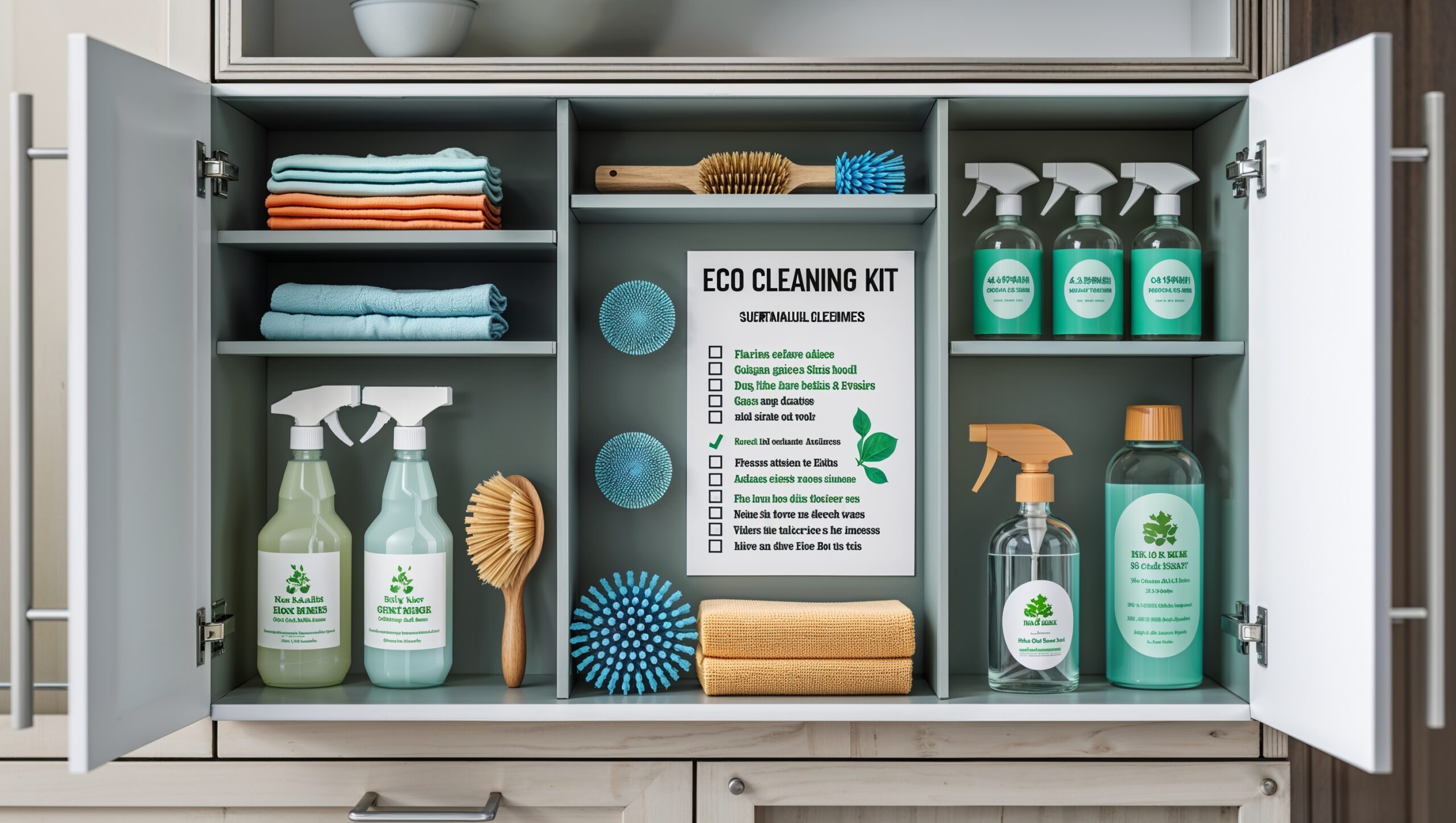Cleaning your home doesn’t have to mean filling your cabinets with harsh chemicals and disposable wipes. In fact, you can maintain a spotless, fresh space using recycled materials and sustainable practices — all while reducing your environmental footprint.
In this article, you’ll learn how to build a green cleaning routine using recycled or recyclable tools, eco-conscious products, and smart habits that protect both your home and the planet.
Why Traditional Cleaning Routines Create Waste
Most conventional cleaning routines rely on:
- Single-use wipes and paper towels
- Plastic spray bottles and packaging
- Harsh chemicals that pollute air and water
- Non-recyclable sponges and brushes
These habits generate unnecessary waste and introduce toxins into your home environment.
But there’s a cleaner way — for your house and the Earth.
1. Use Tools Made from Recycled Materials
✅ Swap traditional tools for eco-conscious options made with post-consumer recycled content:
Examples:
- Scrub brushes with recycled plastic handles
- Sponges made from recycled foam or cellulose
- Dustpans from repurposed plastic bottles
- Mops with washable microfiber heads
- Buckets made from recycled plastics
These tools are durable, reusable, and support the recycling industry.
🛒 Look for labels like:
- “Made from 100% recycled plastic”
- “Post-consumer recycled content”
- “Eco-friendly” or “sustainably manufactured”
2. Repurpose Items You Already Have
Your recycling bin might hold your next cleaning tool.
♻️ Try:
- Old T-shirts or towels → cut into reusable cleaning rags
- Toothbrushes → detail brushes for grout and tight corners
- Mason jars → containers for DIY cleaners
- Worn-out socks → great for dusting blinds and shelves
- Newspaper → streak-free window polishing
You’ll reduce waste and save money.
3. Use Refillable or Recycled Spray Bottles
Instead of tossing plastic bottles after one use, refill them!
✅ Options:
- Buy concentrates and dilute them in your own bottle
- Use refill stations for eco-cleaning solutions (available in many co-ops and green stores)
- Choose brands that offer closed-loop packaging or bottle return programs
Some brands even make bottles from 100% recycled plastic — helping close the loop.
4. Choose Eco-Friendly, Low-Waste Cleaners
Many traditional cleaners come in plastic, contain harmful ingredients, and aren’t biodegradable.
✅ Better options:
- Cleaning tablets that dissolve in water (sold in compostable packaging)
- Plant-based or biodegradable cleaners
- Refillable concentrates
- DIY solutions like vinegar, baking soda, lemon, and essential oils
🛑 Avoid:
- Bleach-heavy products
- Aerosol cans
- Ammonia-based sprays
- Products with artificial dyes and fragrances
Check for third-party certifications like:
- ECOLOGO
- Green Seal
- EPA Safer Choice
5. Reduce Single-Use Paper Products
🧻 Instead of paper towels:
- Use cloth rags or microfiber towels
- Designate a set of “cleaning cloths” you wash weekly
- Try unpaper towels that snap together and roll like a paper towel roll
Each reuse saves trees and reduces landfill waste.
6. Compost or Recycle Waste After Cleaning
Even eco-cleaning can create some waste — so dispose of it correctly.
♻️ Examples:
- Compost used lemon peels and vinegar-soaked paper
- Recycle packaging from eco products
- Wash and reuse rags, mop heads, and bottles
- Donate old tools (if still usable) or recycle broken plastic responsibly
Avoid mixing compostable and recyclable waste — sort correctly to keep materials clean.
7. Set a Weekly Routine to Stay Efficient
An eco-friendly cleaning habit is easiest when it’s organized and consistent.
🗓️ Tips:
- Pick one day a week for deeper cleaning
- Keep all tools in a labeled “Green Cleaning Kit”
- Involve family or roommates to divide tasks
- Track how many disposables you’ve replaced with reusables
Making it part of your routine ensures long-term impact.
Clean Home, Clean Conscience
A sustainable cleaning routine isn’t just better for the planet — it’s healthier for your air, water, and wellbeing.
By using recycled tools and making smarter choices, you reduce waste without sacrificing effectiveness. You’ll clean with confidence — and create less mess for the Earth.
